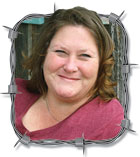 In his 1977 novel “The Unsettling of America: Culture and Agriculture,” Wendell Barry wrote: “The soil is the great connector of lives, the source, and destination of all. It is the healer and restorer and resurrector, by which disease passes into health, age into youth, death into life. Without proper care for it, we can have no community because without proper care for it we can have no life.”
In his 1977 novel “The Unsettling of America: Culture and Agriculture,” Wendell Barry wrote: “The soil is the great connector of lives, the source, and destination of all. It is the healer and restorer and resurrector, by which disease passes into health, age into youth, death into life. Without proper care for it, we can have no community because without proper care for it we can have no life.”
For those who are unfamiliar with Barry, he’s not only an author, poet, advocate and educator but the son of a farmer and a farmer himself. While not everyone agrees with some of Barry’s opinions and his approach to today’s agriculture, his writings are very poignant because he advocates for a reduced ecological impact on the Earth.
He also says many of the old ways are the best ways to farm. While many tend to share his feelings, some of the old timers might not agree with his assertion.
The Dust Bowl in the 1930s showed there was a need for improved farming practices. With the promise of free land, people flocked westward. Having little or no farming experience, high prices for crops prompted the settlers to plow up millions of acres of prairie land. A severe drought in the Midwest and the Southern Great Plains in 1931, which was right on the heels of the stock market crash in 1929 that signaled the start of the Great Depression, caused crops to fail, so the bare ground sat idle. Massive dust storms followed the next year and it was an environmental disaster. With nothing to hold the soil, it simply blew away. By 1934, an estimated 35 million acres of formerly cultivated land had been rendered useless for farming, while another 125 million acres was rapidly losing its topsoil. Dust was blown as far as New York and Washington, D.C., and ships in the Atlantic Ocean were said to be coated with dust from the Midwest. It wasn’t until late 1939 that the Dust Bowl years came to an end, but it was at least another decade before the land was suitable once again for agriculture use.
The Dust Bowl prompted the need for improved agricultural practices and we’ve come a long way. We’ve learned how to reduce soil erosion with no-till planting, the planting of cover crops and other techniques. We’ve helped improve the quality of water sources by limiting the access of livestock to creeks and rivers that flow through the Ozarks. We’ve reduced the number of chemicals used by developing crops that are resistant to insects, and by rotating livestock in a way that reduces weeds and breaks the lifecycle of many insects.
Many farmers and ranchers are also seeing positive results by utilizing wind and solar power. Some are even able to “go off the grid” by using the renewable energy sources to help power their homes and barns, and pump water to their livestock.
While the Dust Bowl days are just a memory, the industry continues to come under fire. Farmers and ranchers are continually blamed for soil contamination, the pollution of streams and lakes, and livestock bears the brunt of animal agriculture opponents for global warming and methane gas. With all of the advancements in agriculture and the efforts being made in the industry to protect the soil, water and air, farmers and ranchers are still the bad guys.
Opponents of today’s agricultural practices might need to do a little research on how farmers and ranchers are more efficient than ever and are leaving a smaller footprint on the environment.
Barry’s writing states that without proper care of the soil, there is no life. I would like to add that without farmers, there is no food and with no food, there is no life.





